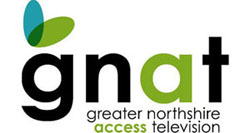Content is King
The primacy of content isn’t a startling new idea. That the quality of your content drives everything else seems pretty obvious, until you have to get down to the brass tacks and actually have to create it. Then all the snags, difficulties and distractions emerge, sometimes predictably, often out of the blue. But in the end, it’s the product you are offering to your customers, or audience as we increasingly say in the media world, that determines success, failure or mediocrity. Just like it is for any business, organization or institution. Deliver the content or service well, and the rest takes care of itself — eventually.
That was the message I heard from the three presenters at one of the final workshops I attended at the end of the ACM (Alliance for Community Media) conference here in Boston this week. It’s been an uplifting experience. I got to meet a bunch of new people, all of whom have been involved in community public access media for far longer than I have. It was fascinating and educational to hear about their experiences and learn about successes and failures.
We heard from Mike Johnson of Northwest Community Television out of the Twin Cities area of Minnesota, who stressed the importance of leveraging your content by loading it onto as many platforms as possible; YouTube, website, Twitter, Facebook as well as shooting it out there on the TV channel. Targeting in to make it easy for your audience to find the content they are interested in — whether it’s what the local school board is doing or something else going on their local world — was crucial in this era of multiple options and ways time-stressed people get their information. That point was reinforced by the next presenter, Chris Lovett of the Boston Neighborhood Network, who showed a dynamite clip about a local issue involving police officers wearing body cameras, and how that had been leveraged across their social media outlets and traceable in terms of numbers of viewers, reinforced by an email blast.
But it was the insights offered by Nanette Johnson, an industry veteran currently the news director of Montgomery Community Media, from an area adjacent to Washington D.C. who drove home the “content is king” point, with a great segment her station had done to get the word out about the need for an underserved community in their viewership area to get improved bus service. Then they followed up on the original story, with the local officials agreeing with the need they had helped highlight.
It was a great example of the kind of relevant local journalism that as we ramp up our News Project here at GNAT, we will hopefully be able to offer our viewers.
The other takeaway from this was that no local issue is too small to not be covered in depth — which will also be one leg of the three-legged stool we hope to create between breaking news segments and weekly wrap ups, combined with a news magazine and an “In Depth” show which features a special guest or guests.
There were other workshops and break-out groups which explored the technical and financial sides of providing local community access television, and for this newbie all of it was interesting food for thought. The best part of these conferences is of course, meeting the people, networking and getting new ideas, as well as having your ideas challenged. An idea I have in mind about exploring the opioid/heroin scourge benefitted greatly from a chat with a producer from a station in Derry, N.H., another state hard hit by this problem, as well as the group discussion that preceded it.
Content is King, Queen and all the Jacks. That’s what will separate us from the rest, or not.
So now we’re back home, and it’s time to put into practice some of this exciting new information and knowledge. Off we go.



